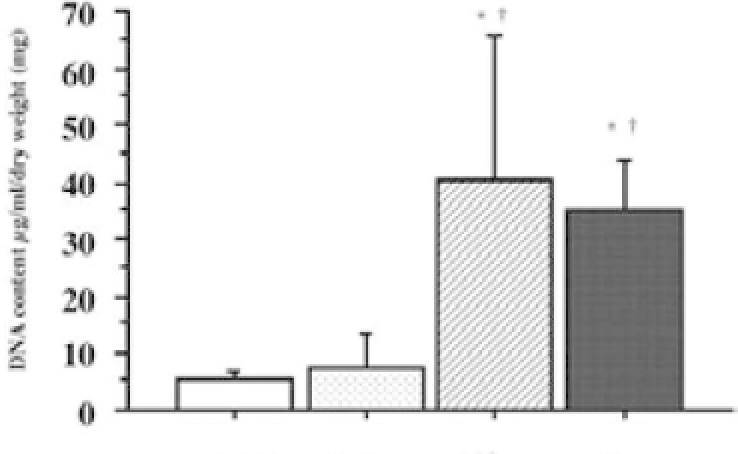Biomedical Engineering Reference
In-Depth Information
70
* †
60
50
* †
40
30
20
10
0
Triton X
DCA
Trypsin
SDS
Figure 26.2.
Residual DNA content of decellularized scaffolds prepared
by four different methods. Triton X-100-treated and sodium deoxycholate-
treated decellularized scaffolds had a significantly lower DNA content than
SDS-treated and trypsin-treated scaffolds. DCA, deoxycholate. *
P
<
0.05
versus Triton X,
†
P
<
0.05 versus DCA(from Ref. 16, Narita
et al
., 2008).
to cell adhesion and proliferation. The mechanical properties, for
example, compliance, tensile strength, burst strength, and suture
retention strength, of decellularized scaffolds were similar to those
ofthenativetissue
17
,
18
(Fig.26.1).Accordingly,itwassuggestedthat
cellular components may not play a major role in the mechanical
properties of the decellularized scaffold but that the extracellular
matrices could contributeto the mechanical strength and stiffness.
Potential shortcomings of decellularized scaffolds for small-
caliber vascular grafts are long-term durability, aneurysmal forma-
tion, calcification, foreign-body (immunological) reactions due to
residual allogenic or xenogenic proteins, and shortage of the donor
if allogenic material is required. Sharp
et al
. demonstrated a case
of aneurysmal formation using decellularized tissue matrix (Syn-
erGraft, Cryolife) after peripheral arterial bypass surgery.
19
Other
reports state that xenogenic decellularized matrix remnants con-
tain xenogenic protein and may cause immunological foreign-body
reactions.
20
Therefore, further studies will be necessary to confirm
the safety and feasibility ofdecellularized scaffolds.











Search WWH ::

Custom Search